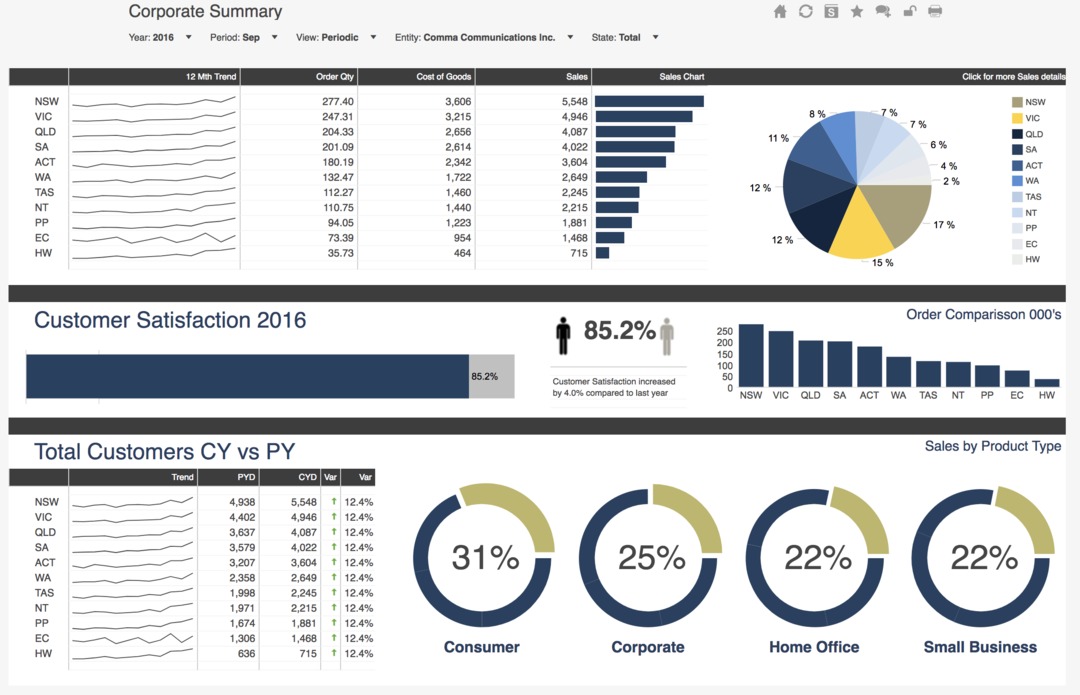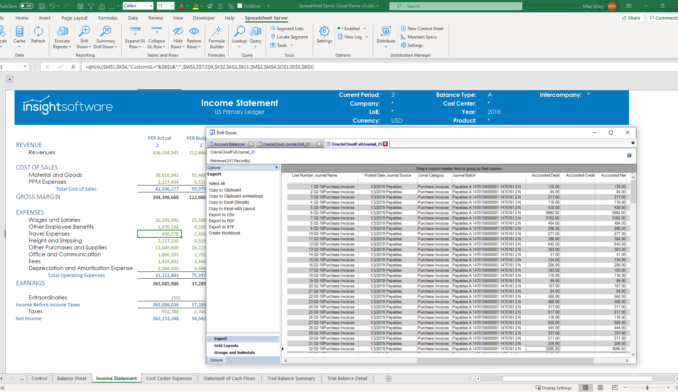Is Your Organization Ready for Self-Service Reporting? 5 Ways to Tell

Is your organization ready for self-service reporting? This is a question a lot of companies are asking, and a recent CIO survey reveals why. Gartner reported in 2018 that information executives believed the output and overall value of self-service analytics would exceed that of professional data scientists by 2019. This shift has game-changing implications.
So Much Data, So Little Talent
In the rush to leverage data on a wider scale, companies have discovered that data volume, velocity, and complexity are a huge hurdle. Data scientists were supposed to be the solution, but they are difficult to recruit and expensive to retain. Consequently, many companies are sitting on a lot of data without time or technical talent to decipher it, let alone use it to inform their business decisions.
The research around self-service reporting indicates that talent gaps are largely irrelevant. Rather than recruiting highly paid professionals, companies simply need to empower the professionals already in their ranks to conduct their own reporting. In the F&A department, throughout the C-suite, and across the decision-making apparatus, reports that users create themselves may prove to be the asset that unlocks the true potential of data.
Ready or Not?
Not surprisingly, many companies are now asking whether they’re ready for self-service reporting. By “ready,” they mean to answer whether they require this technology (and whether it’s one they’re equipped to embrace) or whether it’s something that would simply be nice to have.
It’s the classic question of enterprise IT: to implement or not to implement. Before you decide one way or the other, look for these signs that indicate you’re overdue for self-service reporting:
- Overreliance on IT: For many companies, reporting is known for being interconnected rather than independent. That’s because whenever someone needs a report, they have to turn to the IT team to retrieve the data or build the report template. Without dedicated financial reporting software, preparing detailed, descriptive reports is a highly technical process that requires extensive outside assistance. Waiting for IT to make its substantial contributions only makes reporting harder (not to mention the extra burden it puts on IT). Therefore, no one objects when technology cuts out the middleman and lets end-users create their own custom reports without having to go to another department or even another team member for assistance.
- Slow Reporting Cycles: Even with IT doing a lot of the heavy lifting, the average reporting process requires accountants to navigate a maze of manual inputs. Pulling data out of various sources, integrating it into Excel spreadsheets, and trying to piece everything together instructively is a constant challenge. With so much of the work done manually, there’s a high risk for errors and omissions corrupting the data and making the reports uncertain. Worst of all, the reports themselves often arrive late or rushed because it’s so much work preparing them. In addition to being exhausting, this situation is unsustainable, especially as decision makers need more reports more of the time. Exceptional financial reporting software facilitates self-service reporting primarily by automating the most labor-intensive aspects of reporting. Accountants invest a lot less upfront, yet have finished reports in a fraction of the time.
- Uninformed Decision Making: Since reporting can be so cumbersome, many companies do it sparingly. Even as they strive to become data-driven and reap all the rewards that follow, they base decisions on shallow, incomplete, or even inaccurate insights. Most companies are aware they could be using data on a deeper level, but lack the tools and techniques to make that possible. To put it differently, they lack a viable way to kick reporting into a higher gear where it produces better information in less time. Contending with inaccessible insights is why only one-third of the respondents in a Harvard Business Review survey report that their companies have achieved a data-driven culture. The rest are still struggling because reporting is too inefficient to put meaningful data in front of every decision maker. Self-service reporting eliminates those inefficiencies to such an extent that users can create reports essentially on demand.
- Stale Reports: When so much effort across departments goes into building reports, there’s not much time or resources left to optimize how those reports look and feel. Too often, they arrive in the form of a bland-looking spreadsheet that does little to highlight key takeaways or establish important context. These reports are also static, meaning they only contain the final metrics and totals and not any of the information behind those numbers. Stale reports like these may fulfill the most basic requirements, but they do little to aid decision making or stoke innovative ideas. In addition to automating report creation, financial reporting software will enhance the resulting documents with rich visualizations and drill-down capabilities for dynamic data exploration. As part of the self-service reporting process, users can customize every detail of their report, from the data to the design. It comes as no surprise that reports created by those who use them have the most relevance.
- Distracted Professionals: In most F&A departments, accountants are spending hours preparing reports, adding up to days or weeks of work by the end of each year. No one would suggest they neglect to report, but they also wouldn’t suggest that specialized professionals should spend a big part of their work life on data management. It’s a waste of their skills and a distraction from the work they should be focused on: work that helps the company refine its financial strategy moving into an uncertain economy. Somewhat paradoxically, F&A departments where people are too invested in reporting are ripe for a self-service approach. That’s because financial reporting software does most of the work for them so that the inputs they do make have a real impact. Think of it this way: Self-service reporting lets accountants focus more on interpreting reports than building them. Their time is put to better use, as are the reports themselves.
Taking the Next Step with Self-Service Reporting
It’s worthwhile to take a long, hard look at your existing reporting process to determine if it’s really working. However, anyone who’s involved probably knows this information intuitively. Whether you’re creating reports or trying to base decisions on them, you’ve likely encountered the flaws in the system already and know how they affect your own responsibilities and the company as a whole. You can probably also imagine what it would be like to pull fresh reports up with a few clicks, bypassing all the frustrations that currently plague the process. No matter what your process is like already, almost everyone considers self-service reporting to be an upgrade.
Are you ready for that upgrade? Without the right financial reporting software, the answer is no. Regardless of how enthusiastic your organization may be, technology is the key. It’s the tool that turns data from an immense and unruly asset into something that drives the organization. When you’re ready to see what this asset looks like in action, download our ebook, Spreadsheet Risk: Transforming an Obstacle into an Asset Using Automation.









